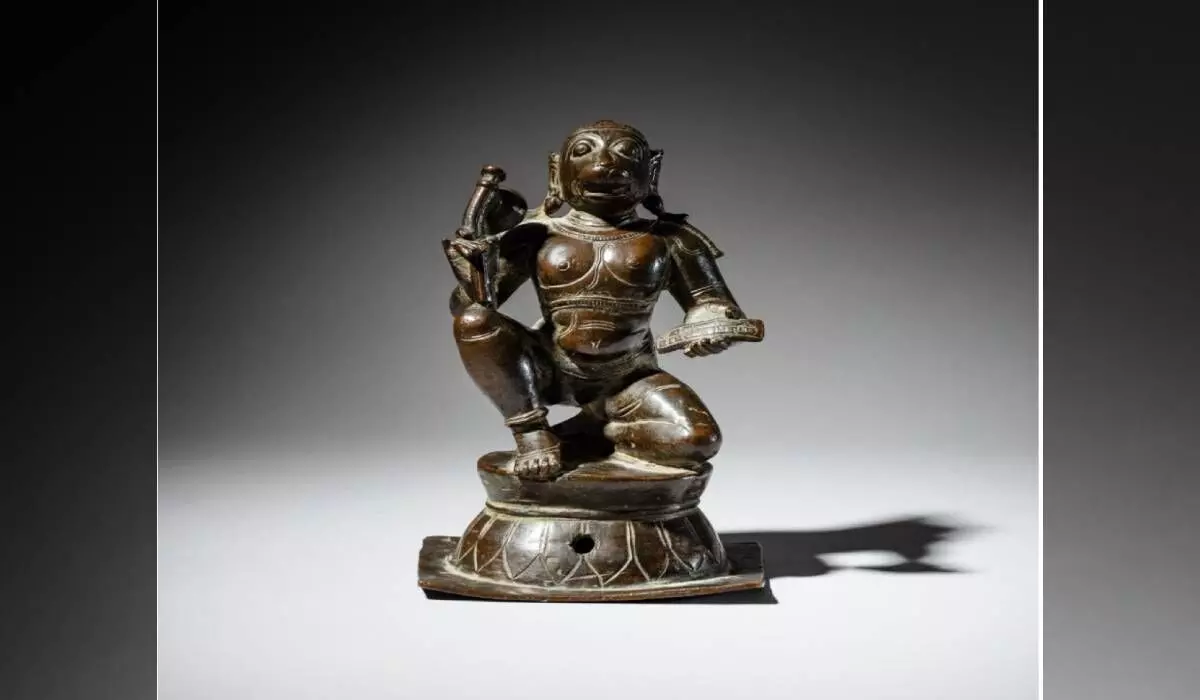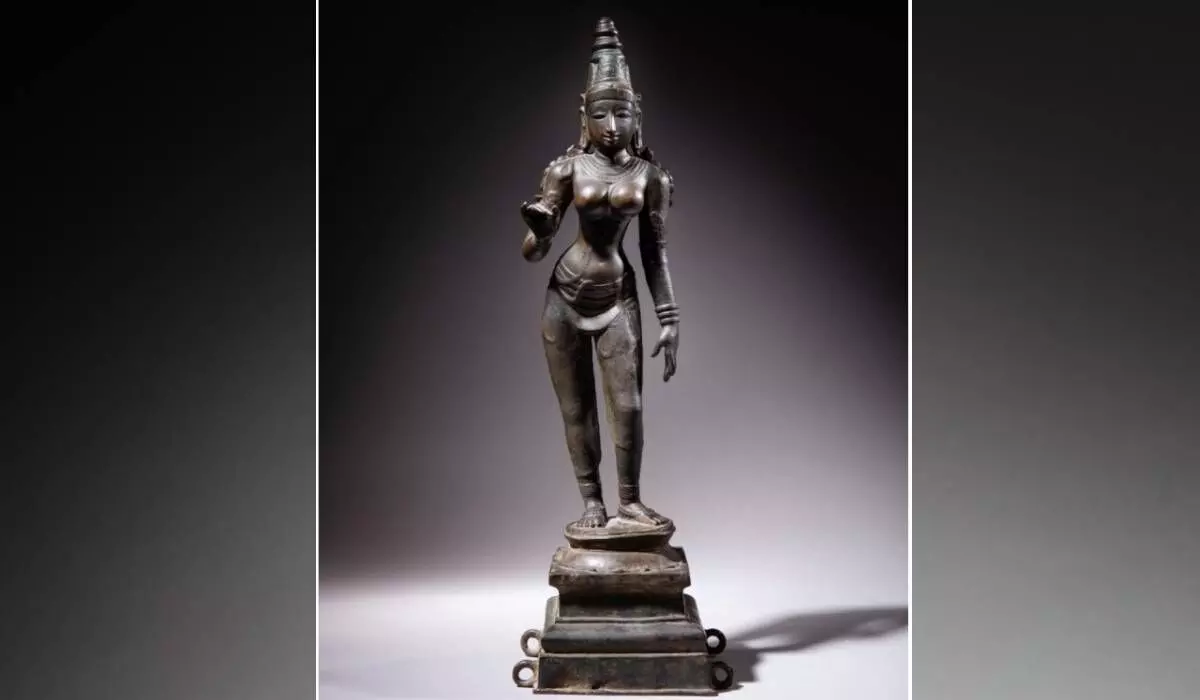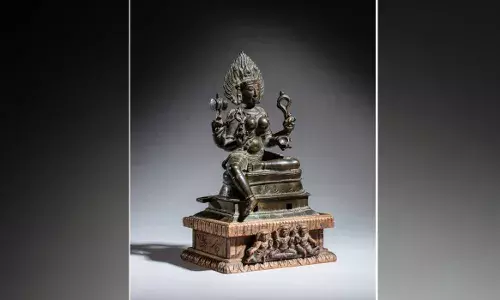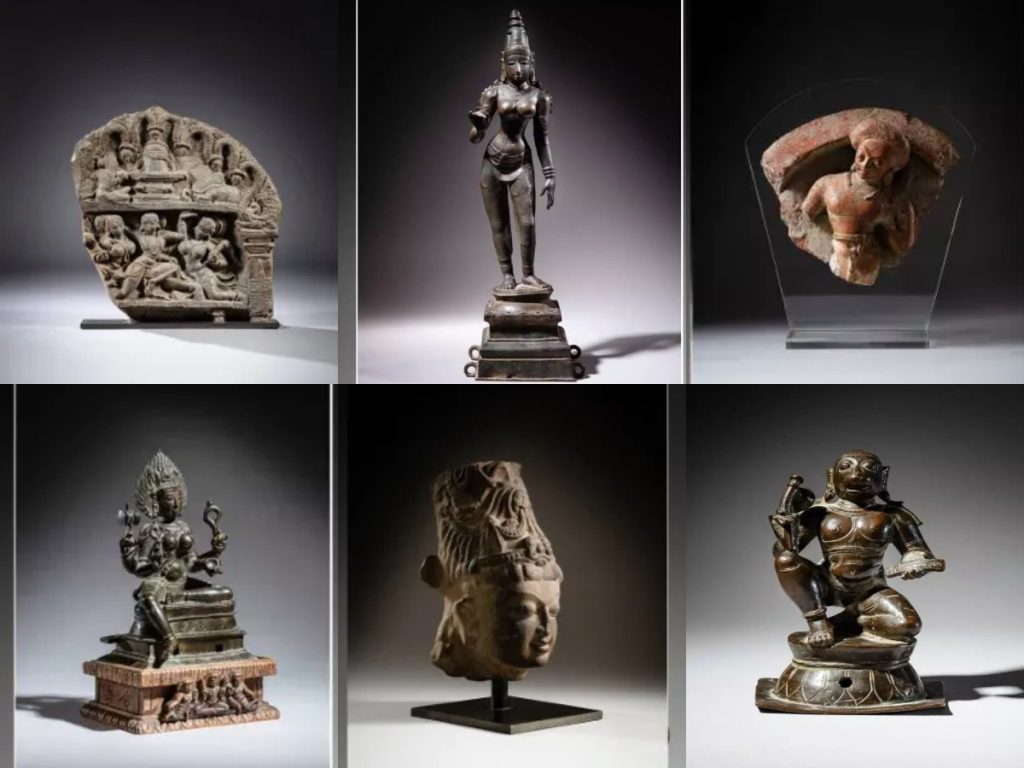Aditya Sisodia
In the realm of Indian art, the limelight often falls on modern and contemporary works, leaving the country’s rich historical arts in the shadows. The cultural heritage of India, spanning centuries, has faced its share of looting and plunder by invaders, colonial powers, and opportunistic individuals seeking profit. It is disheartening to witness priceless Indian artworks appearing in international auctions, with their provenance tracing back to European collections from the 18th and 19th centuries. While many of these artworks have legitimate origins, one can’t help but speculate on the pieces that may have left the subcontinent through less lawful means.

Recently, the Sotheby’s Arts d’Asie (Arts of Asia) auction in Paris on June 15 shed light on some Indian art pieces of immense historical significance. Amidst a total of 241 lots dominated by Chinese artifacts, eleven pieces of Indian origin captured attention. The oldest Indian artwork on offer was a terracotta torso of Shiva dating back to the Gupta period, around the 5th century CE. The sheer antiquity of such a piece is unimaginable, invoking a sense of wonder and reverence.
One standout Indian artwork that garnered significant attention and exceeded its pre-auction estimate was an exquisite bronze figure of Uma from the Chola period in South India, circa 11th century. Measuring 66 cm (26 in.) in height, this sculpture, adorned with elaborate clothing, jewelry, and a remarkable hairstyle, stood on a lotus pedestal in a tribhanga pose. The graceful curves of Uma’s limbs showcased the exceptional craftsmanship of the Chola bronze creators, making it a prized possession. The auction estimated its value at €50,000 – €70,000, but it ultimately sold for €95,250 (approximately Rs 85.40 lakh).

Another remarkable Indian artwork was a bronze sculpture of Kali from the Vijayanagara period, circa 16th century. Measuring only 25.3 cm (10 in.), this tiny idol, accompanied by a carved wooden stand, exceeded its estimated value of €8,000 – €12,000, selling for €17,780 (approximately Rs 15.93 lakh). Vijayanagara bronzes have a distinctive place in Indian sculpture, borrowing from the legacy of the Chola bronzes while incorporating more elaborate ornamentation and rigid postures.

The auction also featured other magnificent treasures from across the Indian subcontinent. A limestone Shaivite stele from Uttar Pradesh, circa the ninth century, captivated bidders with its intricate carvings of a divine figure flanked by chauri-bearers, a linga above, and a recumbent bull. Despite being estimated at €3,000 – €5,000, it sold for an impressive €15,240 (approximately Rs 13.66 lakh). An imposing stone head of Vishnu from North India, dating back to the 11th-12th century, fetched €9,525 (approximately Rs 8.53 lakh), nearly double its highest pre-auction estimate.
The highlight of the Indian section was undoubtedly the terracotta torso of Shiva from the Gupta period, estimated at €3,000 – €5,000, and sold for €7,620 (approximately Rs 6.83 lakh). Measuring 28 cm (11 in.) in width, this fragmented sculpture offers a remarkable connection to the ancient Indians who lived 1600 years ago, showcasing their enduring arts and crafts.
These captivating artworks, boasting immense historical value, not only evoke a sense of pride but also serve as a testament to the extraordinary skills of nameless artists who have left an indelible mark of greatness for us to cherish. Among the other notable pieces, a bronze kneeling figure of Hanuman from South India, circa 16th century, sold for €6,350 (approximately Rs 5.69 lakh), surpassing its estimated value of €2,000 – €4,000. Additionally, an inscribed Jain shrine, potentially from Rajasthan or Gujarat and bearing the inscription “Samvat 1512” (1455 CE), also achieved the same price.
Browsing through these stunning works of art, each carrying a profound historical significance, instills a sense of pride in the astounding abilities of our forefathers. The anonymous artists who crafted these masterpieces have bequeathed us with a lasting legacy, reminding us of the rich cultural heritage that continues to be celebrated worldwide.
In a world where modern and contemporary art often dominate the spotlight, it is crucial to re-focus on India’s historical art treasures. These auctions provide a platform to appreciate and preserve these invaluable pieces, ensuring that they remain a source of inspiration for generations to come. As we witness the sale of such remarkable artworks, it serves as a reminder of the importance of safeguarding and promoting India’s cultural heritage, cherishing the legacy left behind by our ancestors.
By shedding light on the historical arts of India and their journey through time, we can elevate their significance and foster a deeper understanding and appreciation for the country’s artistic heritage. As we continue to celebrate the achievements of contemporary Indian art, let us not forget the enduring allure and profound cultural resonance of India’s historical masterpieces.





